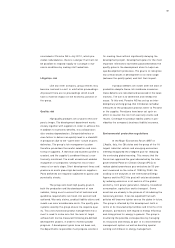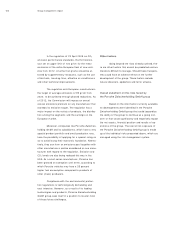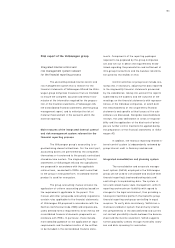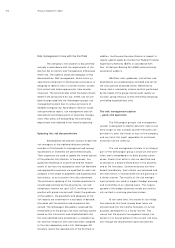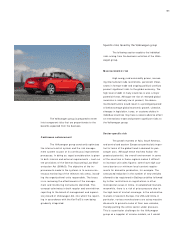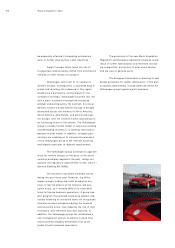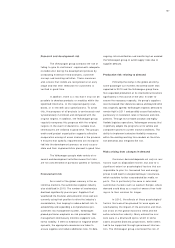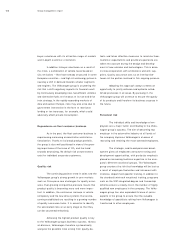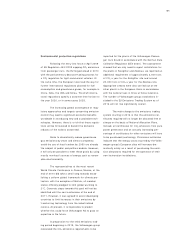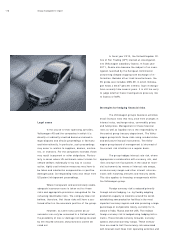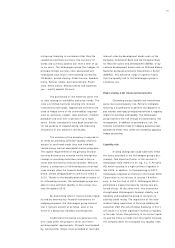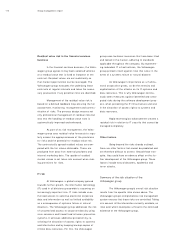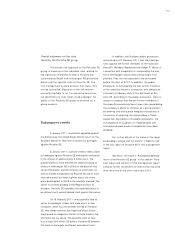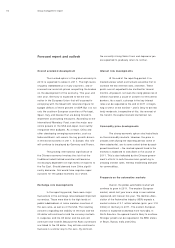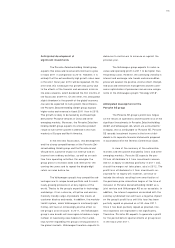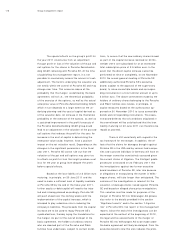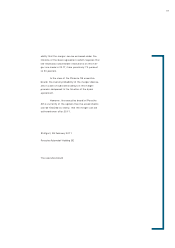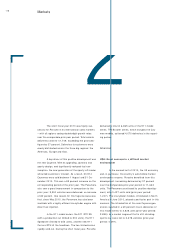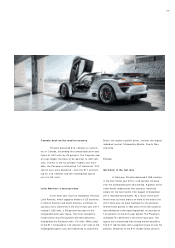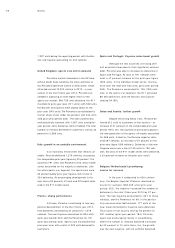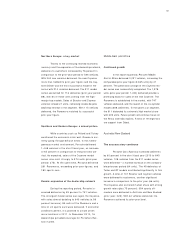Porsche 2010 Annual Report Download - page 113
Download and view the complete annual report
Please find page 113 of the 2010 Porsche annual report below. You can navigate through the pages in the report by either clicking on the pages listed below, or by using the keyword search tool below to find specific information within the annual report.intragroup financing in currencies other than the
respective functional currency. The currency for-
wards and currency options can have a term of up
to six years. The Volkswagen group thus hedges its
principal foreign currency risks associated with
forecasted cash flows in the following currencies:
US dollars, pound sterling, Czech koruna, Swedish
krona, Russian rubles, Australian dollars, Polish
zloty, Swiss francs, Mexican pesos and Japanese
yen – mostly against the euro.
The purchasing of raw materials gives rise
to risks relating to availability and price trends. The
risks are limited mainly by entering into forward
transactions and swaps. Appropriate contracts are
used to hedge some of the commodities required
such as aluminum, copper, lead, platinum, rhodium,
palladium and coal over a period of up to eight
years. Similar transactions have been entered into
for the purpose of supplementing and improving
allocations of CO2 emission certificates.
The solvency of the company is ensured at
all times by providing sufficient liquidity reserves,
access to confirmed credit lines and tried-and-
tested money market and capital market programs.
The capital requirements of the growing financial
services business are covered mainly through bor-
rowings at matching maturities raised in the na-
tional and international financial markets. Risk pre-
miums, a component of refinancing costs that had
risen sharply when the financial and economic crisis
broke, almost dropped back to pre-crisis levels in
2010. Thanks to the broadly diversified structure of
its refinancing sources, the Volkswagen group was
able to raise sufficient liquidity in the various mar-
kets throughout 2010.
By diversifying when it invests excess liquid-
ity and by entering into financial instruments for
hedging purposes, the Volkswagen group ensures
that it remains solvent at all times, even in the
event of a default by individual counterparties.
Credit lines from banks are generally only
ever used within the group to cover short-term
working capital requirements. Projects are financed
by, among other things, loans provided at favorable
interest rates by development banks such as the
European Investment Bank and the European Bank
for Reconstruction and Development (EBRD), or by
national development banks such as KfW and Banco
Nacional de Desenvolvimento Econômico e Social
(BNDES). This extensive range of options means
that the liquidity risk to the Volkswagen group is
extremely low.
Risks arising from financial instruments
Channeling excess liquidity into investments
gives rise to counterparty risk. Partial or complete
failure by a counterparty to perform its obligation to
pay interest and repay principal would have a negative
impact on earnings and liquidity. The Volkswagen
group counters this risk through its counterparty risk
management. In addition to counterparty risk, the
financial instruments held for hedging purposes hed-
ge balance sheet risks, which are limited by applying
hedge accounting.
Liquidity risk
A rating downgrade could adversely affect
the terms attached to the Volkswagen group’s bor-
rowings. One important factor in this context is
Volkswagen AG’s interest in Dr. Ing. h.c. F. Porsche
AG, which resulted in a high outflow of liquidity in
late 2009. In addition, at the beginning of 2010,
Volkswagen acquired an interest in the Suzuki Motor
Corporation at a total cost of around 1.8 billion
euro. In the first half of 2010, Volkswagen AG im-
plemented a capital increase by issuing new pre-
ferred shares. At the same time, this transaction
strengthened Volkswagen’s financial stability and
flexibility and enabled the group to maintain its
existing credit rating. The acquisition of the auto-
mobile trading operations of Porsche Holding Ge-
sellschaft mbH (Porsche Holding Salzburg) in 2011
will result in a further significant outflow of liquidity
in the near future. Due primarily to its current liquid-
ity and the inflow of funds from the capital increase,
the company does not anticipate any liquidity risks.
111


